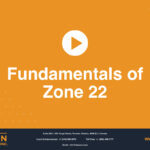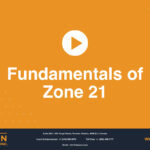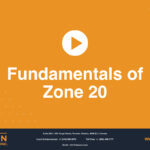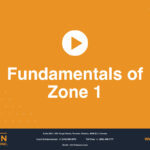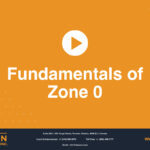Fundamentals of Zone 2
Electrical equipment is often installed in locations where there are gases present, making them hazardous locations. Therefore, it is required that these products to be designed and constructed in compliance with safety standards in order to be safe for use in such hazardous locations.
As per IEC standards, the classified areas are categorized in three groups: Zone 0, Zone 1 and Zone 2.
This diagram of a typical petrol station shows the areas classified as Zone 0, Zone 1 and Zone 2. In this animation, our focus is on the Zone 2 classified areas.
Zone 2 is a location in which explosive gas atmospheres are not likely to occur in normal operation and, if they do occur, they will exist for a short time only. Zone 2 includes the area adjacent to a Zone 1 location, from which explosive gas atmospheres could be communicated.
In our example of the tank, the area identified as Zone 2 is outside of and immediately adjacent to the Zone 1 aera. Under normal operating conditions, there would be no gas present outside the tank. If gas leaks out of the tank due to accidental rapture, repair, or maintenance, however, a hazard exists. Gas leaking out would create a hazard if the equipment installed inside fails or operates in an abnormal manner. The probability of the occurrence of an ignitable concentration is rare and, if one occurs, it only persists for a short period.
The product being used in this area must be safe. In order to be certified as compliant with safety Standards for Zone 2, the product must be protected by one or more of the following eleven protection techniques: intrinsic safety, non-arcing and non-sparking, sealed devices, encapsulation, flameproof, purging and pressurization, oil immersion, powder filling, Increased safety, optical radiation, and special protection.
It is important to use the protection technique that is best-suited to the product based on its design and function. Products suitable for use in Zones 0 and 1 may also be used and installed in Zone 2.
Request a Consultation
Complete the form below to get started.

